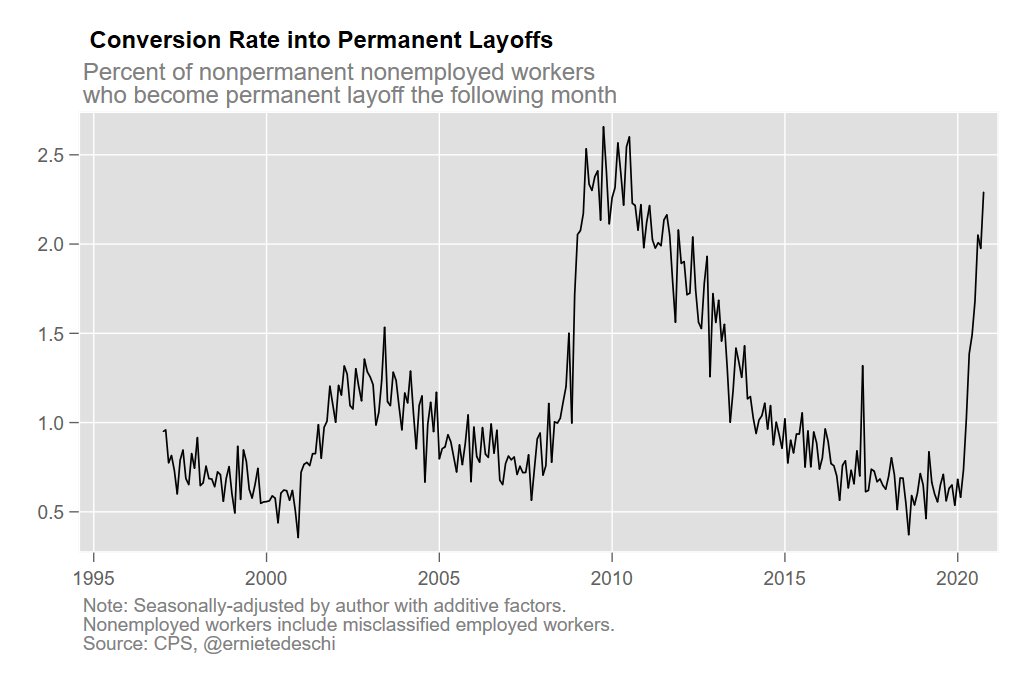
The good news is that the rate in which employed workers are going directly into *permanent* layoff has fallen, though is still elevated [left].
The bad news is that the rate at which already-nonemployed workers are *becoming* permanent layoffs is high and rising [right].

The bad news is that the rate at which already-nonemployed workers are *becoming* permanent layoffs is high and rising [right].


Meanwhile, hourly wage growth among workers keeping their jobs is stable [L], but weekly wage growth has fallen [R], a sign that employed workers are getting fewer hours. 



• • •
Missing some Tweet in this thread? You can try to
force a refresh













